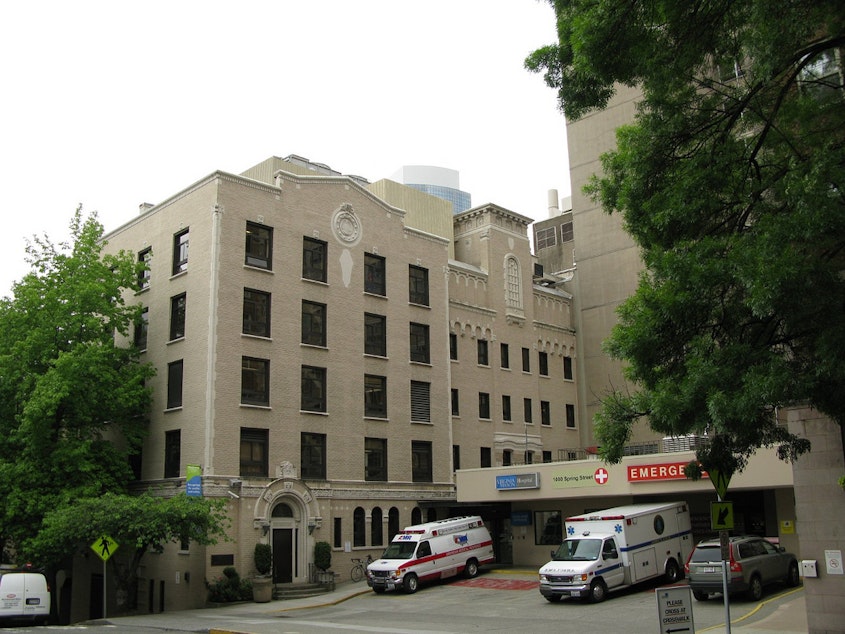Investigation continues into Virginia Mason bacterial outbreak, link to patient deaths unclear

A bacterial outbreak at Virginia Mason Medical Center in Seattle has sickened 31 patients since October. Seven of them have since died, but it’s unknown what caused those deaths — the infection or the diagnoses that brought them to the hospital in the first place.
Klebsiella pneumoniae is a bacteria usually found in health care settings, and often resistant to antibiotics. It can cause pneumonia, meningitis, and wound or bloodstream infections.
Virginia Mason is working with King County’s public health agency and the CDC to try to pinpoint the source of the outbreak. While that’s ongoing, the hospital has said “the risk of transmission to patients is extremely low” and the patients who died were very sick from other causes.
The investigation started with a deep dive into the medical records of infected patients, looking for places in the hospital they’d all spent time or other commonalities.
“That initial approach may not always yield immediately a smoking gun,” said Dr. Eric Chow, with the county public health agency.
It didn’t in this case — so, next, he and the hospital took samples from surfaces like sinks and counters, in different patient rooms and common areas, to see where the bacteria might be coming from.
They focused on plumbing and on the possibility that the bacteria was getting splashed near sinks because of the nature of this bacteria.
“Klebsiella pneumoniae, specifically, is a common bug that can actually be found in the human gut, so when an individual uses the bathroom, washes their hands, the bacteria can also colonize those surfaces,” Chow said.
But the experts investigating this outbreak didn’t find any surface bacteria that matched the samples from infected patients, so Chow said they worked on general infection control practices. They made sure hand sanitizer was readily available outside patient rooms. They moved items away from sinks, so they wouldn’t get contaminated when people were washing their hands. They improved surface cleaning processes, with an eye to killing bacteria more successfully. And they replaced parts of the plumbing that might harbor a lot of bacteria.
Despite all those measures, the outbreak is still ongoing, and the hospital is still finding additional patients who have been infected. The latest case was identified on April 3, according to a public update from Virginia Mason.
Chow said the next step is for the hospital to implement even more rigorous infection control, and he plans to recommend another round of environmental samples to try again to pinpoint the source of the bacteria.
There is more information about the outbreak on the hospital's community resources page.

